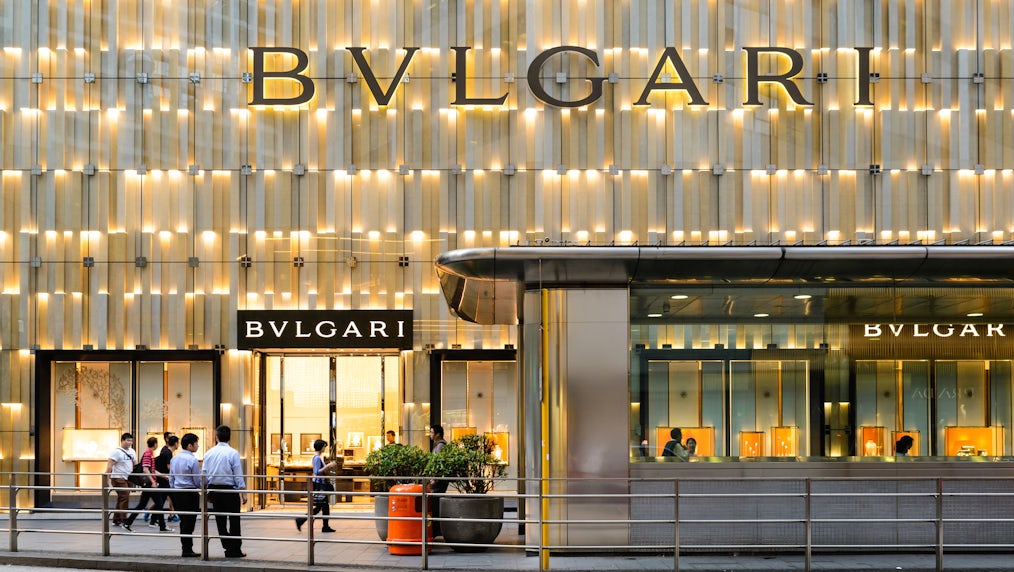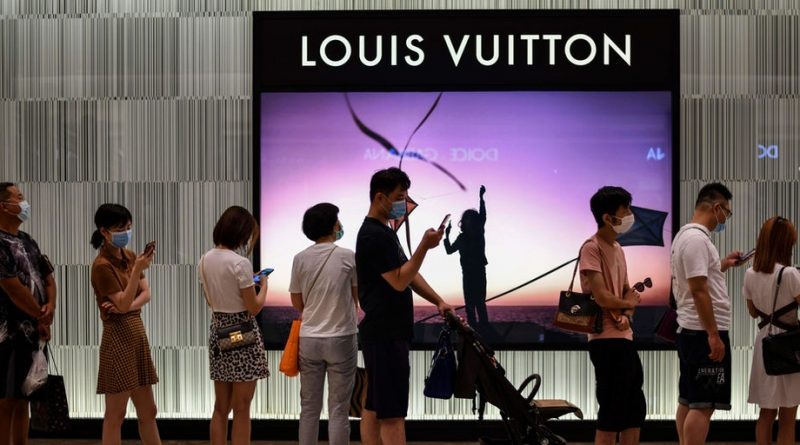The Real Reason Louis Vuitton Is Launching Its Global Exhibition in Wuhan | BoF Professional, China Decoded
SHANGHAI, China – For most people outside of China, the city of Wuhan is known for one thing and one thing only.
As the first city struck by a widespread outbreak of Covid-19 at the beginning of this year, Wuhan is now saddled with an unfortunate reputation. As the epicentre of a pandemic that has impacted almost everyone on the planet, the capital of Hubei province urgently needs to project a new narrative to rebrand itself both within and beyond China’s borders.
Enter Louis Vuitton and brands like it clamouring to be part of the phoenix-rising-from-the-ashes story that the Chinese government want to promote as a lynchpin in the broader narrative of China vanquishing the virus. Wuhan’s 2020 profile makes it seem like a less-than-luxurious destination, but as a prosperous tier-two city of 11 million people, which before the pandemic was described as “the Chicago of China,” it was long considered a natural home for luxury shopping.
In fact, given the city’s strategic location on the Yangtze River and its economic rise in the years leading up to 2020, it is unsurprising that the iconic French brand chose Wuhan as the first stop of its new travelling exhibition See LV, which charts 160 years of the brand’s history.
Set within local luxury mall Wuhan International Plaza, the exhibition, which opens on October 31 and runs until December 6, presents a digital portrait of a young Louis Vuitton (the founder) made up from more than a million images of his native Jura region in France. One room is devoted to ready-to-wear; another to leather goods. All together, seven parts of the exhibition bring together an impressive array of 20th century trunks and collaborations with Chinese contemporary artists Liu Wei and Zhao Zhao.
In one sense, the introduction of a large-scale exhibition from Louis Vuitton in the city of Wuhan can be seen as a goodwill gesture. International brands across the board, and Louis Vuitton particularly, have been vocal about their support for the city this year.
In the earliest days of Wuhan’s lockdown, on January 27, Louis Vuitton’s parent company LVMH announced that it had given $2.2 million to the Red Cross Society of China. Then, on February 18, Louis Vuitton launched a campaign on Weibo that featured multiple Chinese celebrity brand ambassadors encouraging Wuhan residents and supporting frontline medical workers.
The city, which bore the brunt of China’s virus outbreak, saw 3,869 deaths from Covid-19 as the city’s hospitals were overwhelmed by the number of sick people seeking treatment and a strict lockdown was imposed on the city for months.
The decision is about much more than just goodwill and ‘guanxi’ with the government.
Showing solidarity with the people of Wuhan plays well with Chinese consumers, who make up the single most important segment of luxury industry sales, and is also a subtle way of showing solidarity with the Chinese government, an entity every major international company needs on-side if they have ambitions to grow a business in the Chinese market.
For its part, the Chinese government has made it clear that Wuhan’s recovery in particular is central to its efforts to see the whole country economically bounce back from its coronavirus outbreak. This goes some way toward explaining why the recent October Golden Week holiday period saw more than 18 million domestic visitors flock to Wuhan, making it one of the most-visited locations in the nation over that period.
But Louis Vuitton’s decision to debut the See LV exhibition in Wuhan, its first stop on a worldwide tour, is about much more than goodwill and ‘guanxi’ (deep connections and relationships) with the government. It’s also smart business.
Louis Vuitton was contacted by BoF, but was not able to respond to questions prior to publication.
Luxury Cities of the Future
In the years prior to the pandemic, Wuhan, already a city larger than New York or Paris, had seen international fashion, luxury and beauty brands flock to shopping centres such as Wuhan International Plaza, Wushang Square, Wushang World Trade Center and Wushang Square Zhongyuan.
Gucci, Hermès, Prada, Cartier, Hugo Boss, Max Mara, Tiffany and Louis Vuitton all boasted boutiques in the city, attracted by its young, professional and upwardly mobile population. Automotive and tech companies abound in the city, fed with talent from numerous local universities and bolstered logistically by the city’s transportation networks, including an international airport.
“If we had spoken a year ago and you had asked me what is the next wave [of cities] to come, I would have pointed to Wuhan… It’s a prosperous city with a lot of wealthy people and it has been a driver of luxury growth,” said Daniel Zipser, senior partner at McKinsey & Company and Greater China consumer & retail practice leader.
As China’s luxury industry bounces back, buoyed by re-shored spending from a population unable to travel abroad, international luxury brands have been quick to re-evaluate the best ways in which to serve Chinese consumers through domestic channels.
This involves not only the widespread adoption of e-commerce and digital solutions in China, but also requires a serious examination of the physical retail footprint on the Mainland to identify which locations in which cities brands should make their focus next.
Bruno Lannes, a partner in Bain & Company’s Shanghai office and head of the firm’s consumer products, retail and luxury practice for Greater China, says that along with first-tier cities and provincial capitals such as Hangzhou and Nanjing, in other important cities with wealthy populations, including Suzhou and Ningbo, “there is potential for more stores.”
Rather than penetrating too deeply into the lower tiers of China’s cities, Lannes anticipates many brands to expand their footprint in cities they have already identified as suitable markets for physical stores.
“So far, many of them have selected one [store location] in the most premium shopping mall in that city, but I think now there are opportunities to open a second one,” he said.
Unsurprisingly, the list of Chinese cities with the largest number of “affluent-plus” households, according to 2018 data from McKinsey Global Institute (MGI) is topped by Shanghai, Beijing, Shenzhen and Guangzhou. They are followed by Hangzhou, Nanjing and Suzhou, with Wuhan coming in at number 13.
Chengdu (number 12 on the list) is obviously important as a strategic location in the Western China region, while provincial capitals such as Xi’an (with its SKP department store outpost) and Kunming (where Hang Lung properties last year opened its Spring City 66 development and the arrival of SKP is anticipated in coming years) are also growing in importance.
If you had asked me a year ago what is the next wave [of cities] to come, I would have pointed to Wuhan.
Kunming, the capital of China’s Yunnan province, which is known for its natural beauty and minority cultures, can reasonably expect to be a beneficiary of China’s domestically focused travel agenda to boot. It is also strategically located as the gateway to the Southeast Asia region.
Meanwhile, just this week, Galeries Lafayette announced the location of its third store, after openings in Beijing and Shanghai, would be Guiyang, the capital of Guizhou province, which was once known as one of the poorest areas of China, but in recent years has seen its GDP growth rate explode.
Another obvious beneficiary of domestic travel retail, the duty-free island of Hainan, is a priority target for luxury expansion. “I think some of the bigger brands are just wondering what they should be doing in terms of Hainan Island,” said Lannes, with the potential for a resurgence of daigou grey market sales if brands have price differentials between their duty-free stores on the island and duty-paid stores on the mainland.
“That’s a new development this year and we are going to see how that pans out [but] clearly Hainan will see a huge development of luxury spending and offering over the next few years. The question for brands is: How do you manage this in the context of your overall national footprint in China?” Lannes added.
A Word of Caution
There are other risks complicating plans for luxury brands looking revamp their physical retail footprint to better reach domestic shoppers.
“The biggest risk I really see is too-small store formats, which are not luxurious enough, in sub-luxury environments, which may actually impact the brand,” Daniel Zipser explained. “The idea [that some brands have is to enter a city market early and] save the cap ex (capital expenditures) with a small store. Even though the retail environment is not ready [they] still want to be there, [but] that’s not necessarily going to be advantageous for the brand.”
The reason being that, “ultimately when the city is ready, a competitor is going to come in with a store three times the size in a nice environment, so I’m not sure there is a first mover advantage necessarily,” he added.
Though Zipser says unreservedly that there is an opportunity for brands to carve out a larger physical footprint in China, he contends that winning domestic consumers in their local market is about more than store openings and events.
The biggest risk I really see is too-small store formats which are not luxurious enough in sub-luxury environments.
There’s no doubt that showing the Chinese market they are a priority by hosting major events, as Louis Vuitton did by staging its men’s show in Shanghai last August, or Dior’s hosting of its “Designer of Dreams” exhibition, which became the first major international luxury event in China since the coronavirus outbreak when it opened in July, continue to be important tools for communication and brand building. But the priority should be unique, better quality events, in order to give Chinese consumers the luxurious experiences they are craving with travel taken off the table.
“It feels like every day there is an event right now, but how do you make sure those events are different and memorable? How do you succeed in converting from those events an increased likelihood of getting people to spend? There are a lot of questions and we don’t have the answers to them yet because it wasn’t needed historically,” when people were travelling internationally and primed to purchase luxury goods on annual trips to European shopping capitals.
Now that those travellers have been redirected to domestic destinations, will they be as ready to pull the trigger on major luxury purchases without the accompanying international experience?
“It’s very different to the experience of being in Paris, being on the Champs-Élysées, waiting for an hour in line at the flagship store, then I buy my bag there in that prestigious location,” Zipser explained.
This means there is a need to invest in flagship experiences in the cities Chinese tourists are flocking to domestically – including Shanghai, Shenzhen and Guangzhou – because these have become the new “window to the world” for brands looking to reach Chinese consumers, as well as creating innovative experiences, pop-ups, exhibitions and events.
“My number one advice to luxury brands in China, and globally by the way, is to learn how to create luxury experiences [locally, meaning] within Mainland China,” Zipser said.
Louis Vuitton, for one, is aiming to do just that this week, in a Wuhan still bruised but resurgent in the shadow of its deadly encounter with coronavirus. Whichever way you look at it, it’s a smart move.
时尚与美容
FASHION & BEAUTY

The catwalk scene from last year’s Autumn Winter edition of China International Fashion Week | Source: Courtesy
China International Fashion Week Underway in Beijing
The “international” part of its name may be slightly misleading, but the Beijing-based China International Fashion Week, which runs October 24 to November 1, is back after cancelling its last edition due to China’s coronavirus outbreak at the beginning of the year. A primarily offline affair, shows on the schedule are almost all local brands, but fashion clout has been added this edition with the recent announcement that former editor-in-chief of Harper’s Bazaar China, Su Mang, has come on board as the executive chairman of the event’s Strategic Development Committee. There is also a significant programme of industry association meetings and conferences running alongside the shows in Beijing. Although Shanghai might lead the way when it comes to international-facing fashion weeks in China, it’s difficult to match Beijing for government association talk fests, a vital part of the apparel and textile industry in China. (China Fashion Week)
Peacebird CEO Discusses Company Performance at Ningbo Fashion Festival
Ningbo, a traditional centre for textile and apparel manufacturing in China’s Hangzhou province, is also home to one of the country’s largest high street fashion brand empires, Peacebird. This year’s Ningbo Fashion Festival, the 24th edition, kicked off last week at the newly inaugurated Peacebird Fashion Centre, and was followed by a media briefing by Peacebird CEO Chen Hongchao, who discussed the company’s latest quarterly earnings. Peacebird’s total operating income increased 15 percent year-on-year, to 5.5 billion yuan ($820 million), net profit increased by 50 percent year-on-year, to 316 million yuan ($47 million). Reflecting both the company’s and the country’s pivot to e-commerce this year, total gross merchandising value (GMV) across Peacebird brands’ e-commerce operations grew nearly 30 percent in the first three quarters of this year, compared with the same period last year. Womenswear clothing e-commerce GMV outperformed, climbing 60 percent. Chen also revealed future ambitions for Peacebird include a global push in the not-too-distant future.
Anta to Buy Reebok?
Chinese sportswear giant Anta is reportedly one of the parties interested in acquiring the Reebok brand from Adidas. According to a German media report, Anta and VF Corp are among the frontrunners vying for the troubled sportswear brand, which saw sales in the second quarter drop 42.3 percent year-on-year. Adidas CEO Kasper Rorsted had said before the pandemic he hoped for a price of about €2 billion ($2.4 billion) for Reebok, a figure unlikely to be achieved today. After building China’s largest sportswear brand by sales, Anta has spent the last few years adding international brands to its portfolio with an eye to global expansion, first acquiring the rights to the Fila brand and then last year leading a consortium that completed a €4.6 billion ($5.15 billion) takeover of Amer sports. (Bloomberg Quint)
科技与创新
TECH & INNOVATION

Bilibili has built a loyal audience of young Chinese users on its unique content | Source: bilibili.com
Bilibili Doubles Down on BBC Partnership
Bilibili will be the exclusive Chinese distributor for landmark BBC titles like Green Planet and The Mating Game, and new scripted fantasy series The Watch. In addition to hosting current programming, Bilibili will also offer some of BBC’s greatest historical hits like Top Gear and Doctor Who. BBC Studios, meanwhile, will be featuring Chinese sci-fi author Liu Cixin in its new series Odyssey into the Future, and has confirmed that “several” joint documentary projects are already in pre-production, with a focus on stories about Chinese culture. Originally founded as an anime, games, comics (AGC) platform, Bilibili has expanded its focus over the years to become a leading voice across a diverse set of cultural nodes relevant to China’s youth — in the first quarter of this year, the site’s number of active users rose to 170 million. (Radii China)
Chinese Short Video Giants Both Mull Hong Kong IPOs
Bytedance is considering listing its viral video-sharing unit Douyin in Hong Kong, according to people familiar with the matter. Meanwhile, Douyin’s biggest competitor in the domestic short-video market, Kuaishou, is also said to be seeking to file an IPO in Hong Kong as early as the first quarter of 2021. In August 2020, daily active users on Douyin had surpassed 600 million and, while Kuaishou has not yet revealed comparable numbers for the same period, the Kuaishou Content Report 2019, released in February, claimed the platform’s DAUs exceeded 300 million in early 2020. (Pandaily)
消费与零售
CONSUMER & RETAIL

Bulgari Store | Source: Shutterstock
Bulgari Plots Physical Expansion in China
Bulgari Chief Executive Jean-Christophe Babin says China is a particular focus for the brand, as well as the broader Asian market, where sales are growing in double digits in contrast to a single-digit growth in western markets. Babin expects Bulgari will recover sales lost to the pandemic within two years, and plans to open five new stores in China next year. (Jiemian)
Report: 40 Percent of Chinese Consumers Expect to Spend More This Singles’ Day
Over the past five years, Singles’ Day festival sales have grown 35 percent annually, last year generating 410 billion yuan (approximately $60 billion) in gross merchandise value (GMV). The economic impact of Covid-19 is making growth predictions for this year more muted, though there are reasons for optimism. According to a new report from Bain & Company, “Will Covid-19 Change ‘Singles Day’?”, more than 40 percent of surveyed Chinese consumers said they expect to spend more on Singles’ Day this year versus last year, and the country is seeing significant growth from lower-tier cities. Bain conducted a survey with approximately 3,200 Chinese consumers to understand their intent going into this year’s event. Results show that new user growth from lower-tier markets will remain strong, accounting for the majority of total daily active users (DAU) growth. (Bain & Co.)
政治、经济、社会
POLITICS, ECONOMY, SOCIETY

Pokémon has changed the names of some characters in the Chinese market | Source: pokemon.com
Pokémon Name Changes Seen as Bow to Censorship
Pokémon, the iconic Japanese media franchise known for its family-friendly fun, has apparently decided to make “regional adjustments” to avoid offending the Chinese government. The Pokémon Company, the entity behind the series, announced on Weibo that it had revised the Chinese names of six Pokémon characters. Words like hooligan, death, and toxic have been scrubbed and replaced with terms associated with a less negative image. Though the company didn’t disclose the reasoning behind the name changes, the decision was seen by many — including Pokémon fans in China — as a necessary compromise made by the brand to comply with censorship rules in the country. (SupChina)
China’s Leaders Map Out the Next Five Years
This week has seen China’s top leaders locked away for the fifth plenary session of the Communist Party’s 19th Central Committee, held from October 26 to 29. The aim of the meeting is to establish China’s next five-year plan for the country’s economic and social development from 2021-2025. Relatively new buzzwords, including “dual circulation and “factor market reform” are expected to feature heavily in the new plan, along with older ones such as “supply-side structural reform” which first emerged in late 2015. Far more than just buzzwords though, these are the strategies and policies that will aim to guide China’s economic development through a fundamental structural shift away from speed toward quality and sustainability. Dual circulation and factor market reform emerged earlier this year and will provide a broad framework for government ministries, officials and advisers to design and implement more detailed, specific policies designed to help the economy grow in a sustainable way. (Caixin)
China Decoded wants to hear from you. Send tips, suggestions, complaints and compliments to our Shanghai-based Asia Correspondent casey.hall@businessoffashion.com.
Disclosure: LVMH is part of a group of investors who, together, hold a minority interest in The Business of Fashion. All investors have signed shareholders’ documentation guaranteeing BoF’s complete editorial independence.


